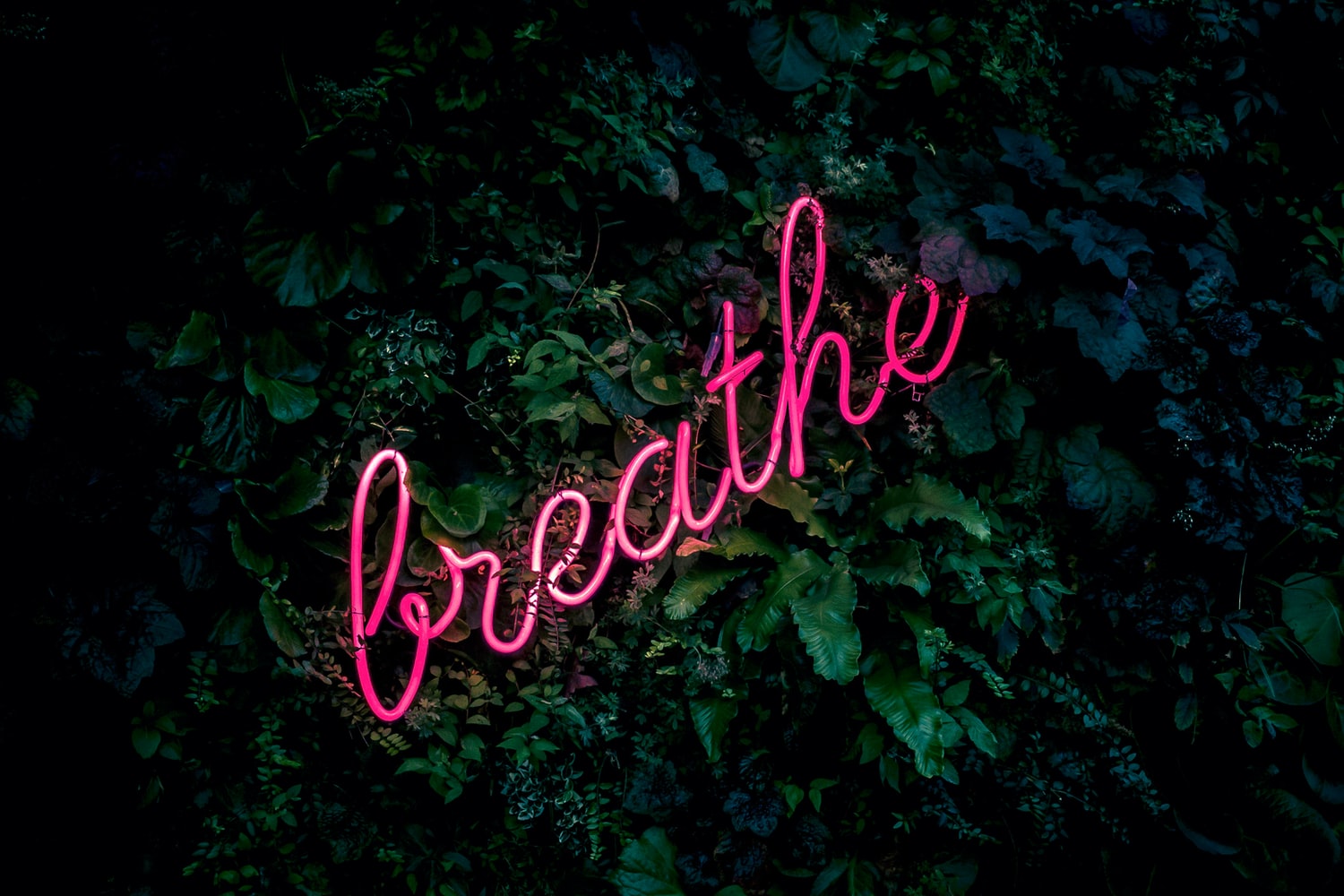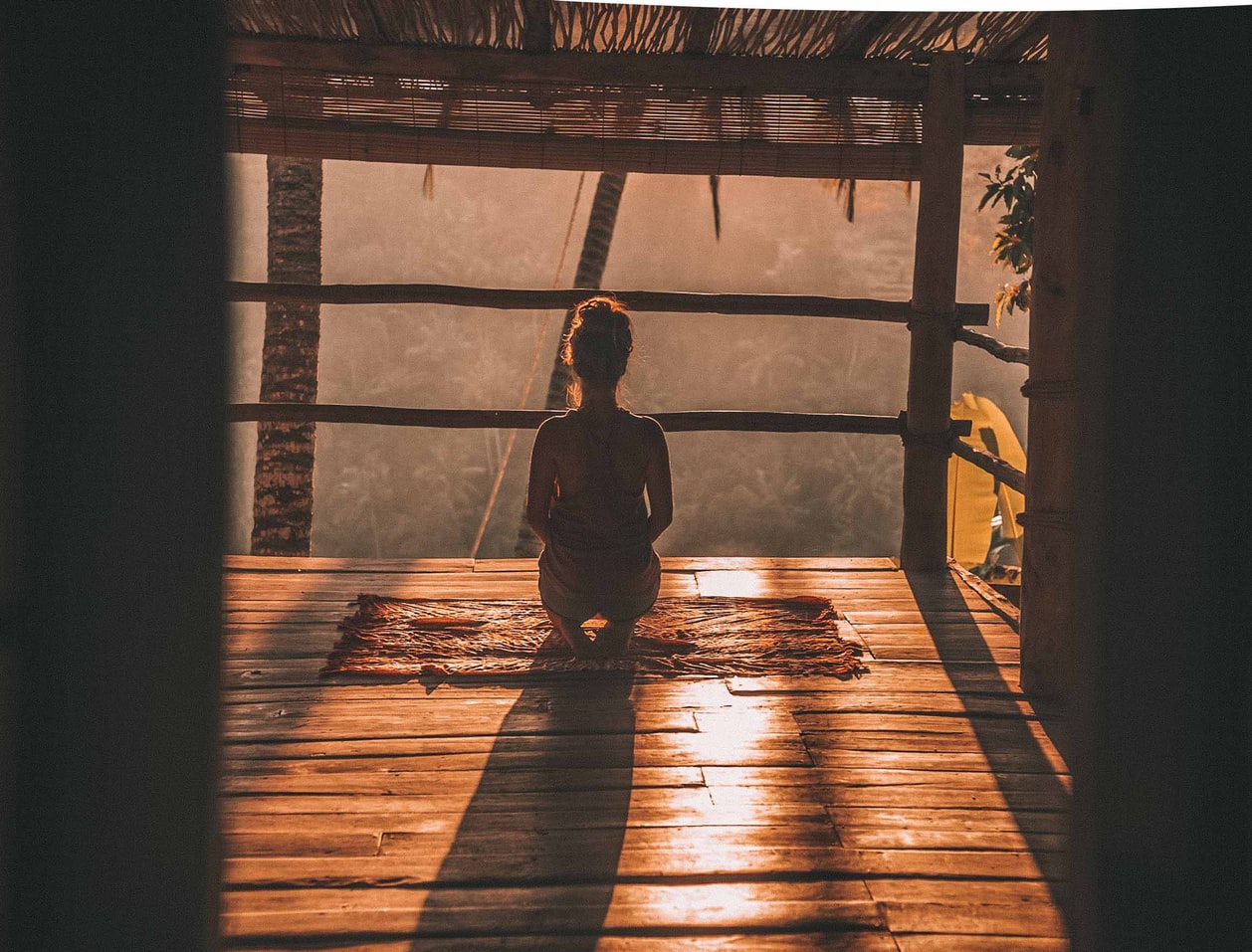
Today feels like a heavy day in America, and I think we could all use a moment to breathe. It’s also International #StressAwarenessWeek, so literally, the perfect day to talk about breathing.
First, I’d like to ask you. When you think about meditation, what’s the first thing that comes to mind? Boring? Too woo woo? I can’t sit still? I’m not into it?
Well, let me ask you another few questions: Do you feel overwhelmed these days? Do you ever feel stressed out? Are you short-tempered lately? Has the pandemic sucked some of the daily joy out of your life? Does life seem a lot like groundhog day? If you answered yes to any of these questions, then you should meditate.
In fact, EVERYONE should meditate.
I’ve spoken quite a bit about meditation lately because we all need a toolbox of wellbeing tips during these times. So, let’s look at the research…
“Neuroscientists have found that meditators shift their brain activity to different areas of the cortex – brain waves in the stress-prone right frontal cortex move to the calmer left frontal cortex. This mental shift decreases the negative effects of stress, mild depression and anxiety. There is also less activity in the amygdala, where the brain processes fear.
Jon Kabat-Zinn, Ph.D., of the University of Massachusetts Medical School, recorded the brain waves of stressed-out employees of a high-tech firm in Madison, Wisconsin. The subjects were split randomly into two groups, 25 people were asked to learn meditation over eight weeks, and the remaining 16 were left alone as a control group.
The researchers found that the meditators showed a pronounced shift in activity to the left frontal lobe. In other words, they were calmer and happier than before.” (Psychology Today)
But here’s what you need to know about meditation– there is no single way to do it, no right or wrong way to do it. You can meditate sitting up, lying down, standing up, heck you can even do a walking meditation. Your eyes can be open or closed. Today, I’m giving you the 411 and the 101 of meditating for you to try.
I am often asked how to start meditating, so now you know. Here is meditation in 9 simple steps.

And, one more thing. When you first start meditating, IT WILL FEEL WEIRD. Yes. Your mind might tell you it’s a waste of time. Why sit there and think about nothing? You will twitch and you will itch (gee, that sounds very Dr. Seuss). You might even get annoyed. May I say, stick with it anyhow. It gets better.
How to Meditate In 9 Simple Steps
1. Commit to 5-30 minutes a day. To begin with, start with 5 minutes. Most people find 15 minutes optimal, but literally 5 minutes of meditation is beneficial. As for how often, it is said that meditation should be aimed for daily, like brushing your teeth. If not daily, every second day.
2. Eliminate Distractions. Choose a time in your day where you have the least amount of distraction. Maybe it’s in the early morning. Maybe it’s lunchtime. For me, lately, it’s been before bed when I am actually lying in my bed. I have never slept better these days, honestly, as I have been committing to my practice every night throughout the pandemic.
3. Relax and get comfortable. Some like to stretch before meditation, as it can loosen the body and help you relax. Remember, if you are a beginner, it’s hard to sit still, so stretching and relaxing gets your mind in the zone. You might want to set a timer, that’s a personal choice.
4. Choose Your Position. As for your position, whether lying down, or sitting up- that is a personal choice. Some like to sit, some like to lie down. As I mentioned above, there are even walking meditations. The only rule is- you should be comfortable (with a straight spine, and not slouching). If you are sitting, relax and rest your hands on your lap. You can sit on the floor cross-legged with the support of a cushion or on a chair with your feet resting on the ground. It’s not necessary to force yourself into a lotus or cross legged position if you’re not comfortable. I enjoy meditating on my back only, and in my bed, regardless of the time of day I am meditating, but these are personal choices. NO choice is wrong.
5. Focus Your Mind. Be prepared for your mind to wander. The key in meditation is to keep your mind ON THE PRESENT MOMENT, and not in the past, nor on what you have to do in an hour. This is your time to be still, to relax, to literally heal yourself. Once you’ve chosen the optimal time, you are comfortable and relaxed, you will be ready to focus your attention on your breath. You can meditate with your eyes open or closed. Sometimes listening to relaxing music can help in meditation. If you’re a beginner, you might enjoy a guided meditation to help get you started, with or without music. I am a meditation teacher on Insight Timer, so feel free to listen to those guided meditations.
6. Breathe slowly and deeply. Close your eyes softly. Begin by taking a few slow and deep breaths — inhaling through your nose and exhaling through your nose. If you’re feeling a little more tense, feel free to take some deep exhalations from your mouth. The first few intakes of air are likely to be shallow, but as you allow more air to fill your lungs each time, your breaths will gradually become deeper and fuller. Take as long as you need to breathe slowly and deeply. When you are breathing deeply, you will begin to feel calmer and more relaxed.
7. If your mind wanders, bring it back to your breathing. If your mind wanders, know that this is NORMAL, and gently try and bring it back to the now- to your breathing. Your mind may wander as often as every 5 seconds. That’s totally okay. As you meditate more often, your mind will start to wander less, and your body and mind will truly begin to relax. It’s hard to sit still and focus on your breath, but make that gentle conscious effort to bring your mind back to the here and now. That is what meditation actually is – bringing your awareness back to what you’re doing.
8. Ending your meditation. When you are ready to end your meditation, open your eyes and stand up slowly. Good job. You did it!
9. Practice Makes Perfect. It’s not a race. Maybe you can only meditate for 3 minutes now. With time, you’ll increase your time, therefore increasing all the wellness benefits you will experience from meditation.
And that my friends, is how you meditate.
The more regularly you do the simple art of breathing and focusing your awareness on the now, the calmer you’ll feel and the more deeply rooted the benefits will be too. I have all my clients in my coaching practice meditate. Yup, once they’re done with me, they actually start to enjoy it!
As I said, I like morning or evening meditations depending on how I’m feeling, but you might like an afternoon breathing pick me up. Play with the times of day and styles until you connect with something.
The difference over time is remarkable. You will begin to feel peaceful, calmer and happier. Stick with it.
Sending you love on voting day, and for #StressAwarenessWeek.



